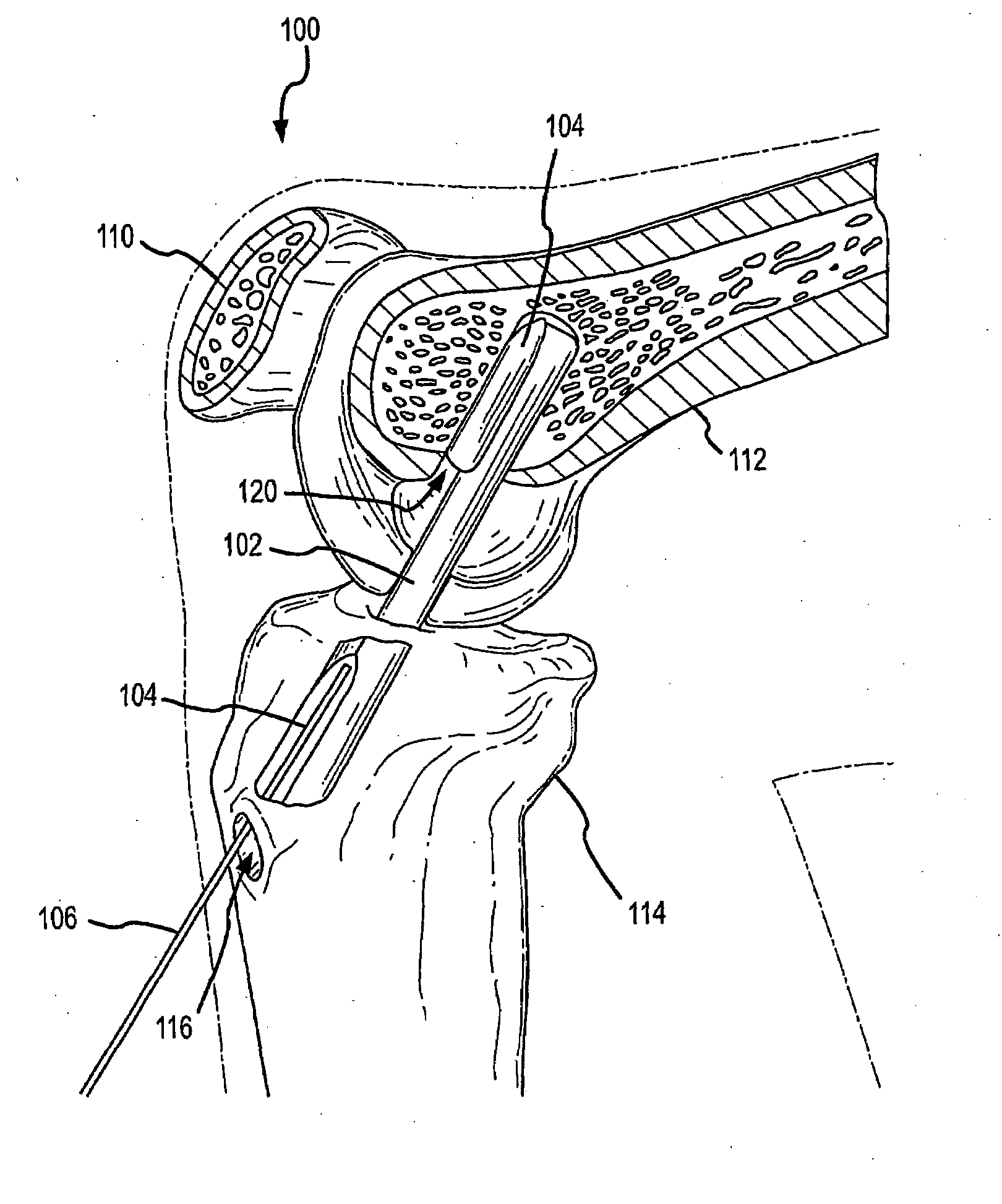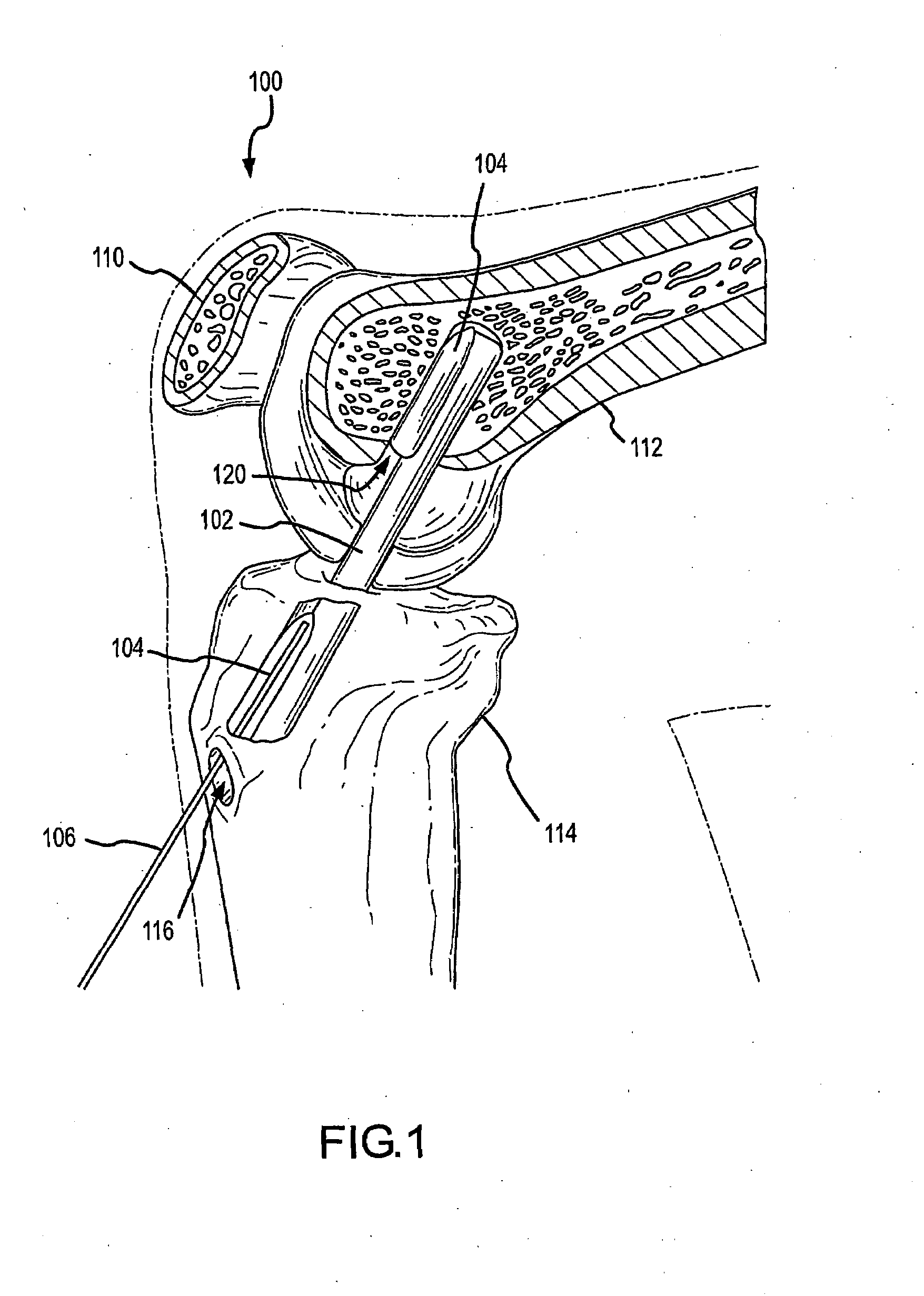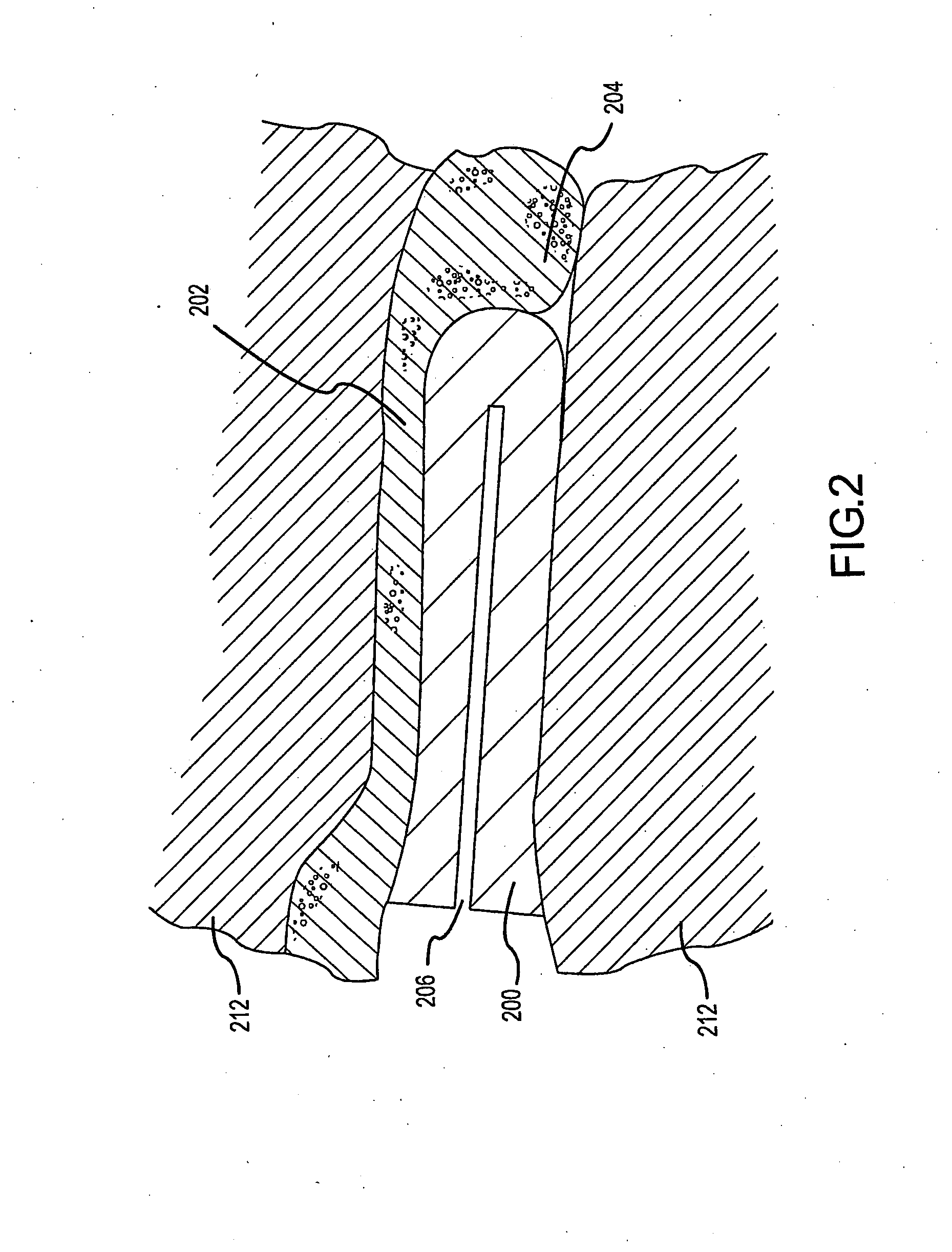Graft Fixation Device
a technology of grafts and fixing devices, which is applied in the direction of prosthesis, osteosynthesis devices, ligaments, etc., can solve the problems of degenerative arthritis, articular hamstring graft fixation techniques, and injuries of physically active peopl
- Summary
- Abstract
- Description
- Claims
- Application Information
AI Technical Summary
Benefits of technology
Problems solved by technology
Method used
Image
Examples
example 1
SMP Fabrication
[0153]Tert-butyl acrylate (tBA) monomer (Aldrich), poly (ethyleneglycol) dimethacrylate (PEGDMA) cross-linker (Aldrich), and the photoinitiator 2,2-dimethoxy-2-phenylacetophen one (Aldrich) were used in their as-received condition without further purification. A polymer solution was formulated by combining 10 wt % PEGDMA, 0.1 wt % initiator, with the balance tBA. Other crosslinker / momomer ratios can be considered and can range from 1 wt %-99 wt % cross-linker. Other photoinitiators include acetophenone, anisoin, anthraquinone, benzene chromium tricarbonyl, benzil, benzoin, benzoin ethyl ether, berizoin isobutyl ether, benzoin methyl ether, benzophenone, 4-benzoylbiphenyl, 2-benzyl-2-(dimethylamino)-4′-morpholinobutyrophenone, 4,4′-bis(diethylamino)-4′ benzophenone, 4,4′-bis(dimethylamino)-4′benzophenone, camphorquinone, 2-chlorothioxanthen-9-one, dibenzosuberenone, 2,2-diethoxyacetophenone, 4,4′-dihydroxybenzophenone, 4-(dimethylamino)benzophenone, 4,4′-dimethylbenzil...
example 2
SMP Thermomechanical Characterization
[0157]The polymer samples were tested using a Perkin Elmer Dynamic Mechanical Analyzer (DMA-7). A three-point flexural configuration was used for glass transition (Tg), strain recovery, and stress recovery tests (FIG. 24 inset). The three-point flexure loading allowed reasonable stress / strain levels in the sample for the temperature range spanning the glassy to the rubbery state. In particular, this configuration allowed 30% maximum bending strain over a 5 mm span during the stress and strain recovery tests. FIG. 24 shows a comparison between the PEGDMA copolymer and PLA, which is a biodegradable polymer used in tibial devices. The drop in storage modulus as temperature increases indicates the material is transforming from a glassy or stiff state to a rubbery state. Also, Tg may be defined in relation to the peak of the tan delta curve.
[0158]The glassy storage modulus is an indication of the material's stiffness. A SMP plug will have a stiffness ...
example 3
Plug Manufacturing
[0160]The test plug material was machined from a 45 wt % PEGDMA ratio to 55% PMMA (poly methyl methacrylate) with a 0.1% photo initiator and mixed in a 14 mm diameter glass test tube. The open end of the test tube was blocked off with a rubber stopper and the test tube plus solution was placed in a 0° C. water bath under a UV lamp for 10 minutes. The glass test tube was then removed leaving a 14 mm PEGPMMA cylinder with a glass transition temperature (Tg) of 40° C. The plugs were machined from the cylinder stock using coconut oil as lubricant and spinal speeds of 450 RPM to be approximately 11.5 mm in diameter and 25.4 mm in length. The edges of the device were filleted to 0.5 mm radii to ensure the device would not shear a soft tissue (tendon) on contact.
[0161]In addition, various unconstrained (or un-deformed) shapes were created to demonstrate multiple forms of possible unconstrained shapes, shown in FIG. 7. Unconstrained shapes and their differences from post-i...
PUM
 Login to View More
Login to View More Abstract
Description
Claims
Application Information
 Login to View More
Login to View More - R&D
- Intellectual Property
- Life Sciences
- Materials
- Tech Scout
- Unparalleled Data Quality
- Higher Quality Content
- 60% Fewer Hallucinations
Browse by: Latest US Patents, China's latest patents, Technical Efficacy Thesaurus, Application Domain, Technology Topic, Popular Technical Reports.
© 2025 PatSnap. All rights reserved.Legal|Privacy policy|Modern Slavery Act Transparency Statement|Sitemap|About US| Contact US: help@patsnap.com



